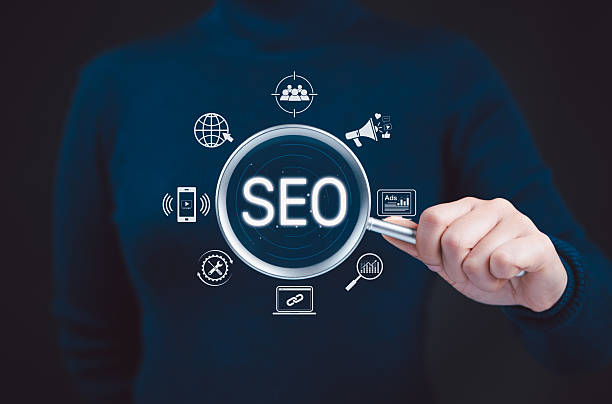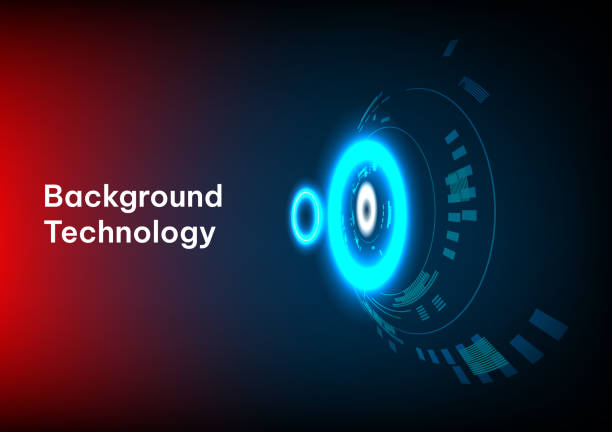What is SEO and Why is it Important for Your Business?

SEO (#SearchEngineOptimization), or Search Engine Optimization, is a set of techniques and strategies used to improve a website’s ranking in search engine results, such as Google.
The main goal of #SEO is to increase organic (non-paid) traffic to a website.
When a user searches for a phrase on Google, Google tries to show them the most relevant and authoritative results.
Sites that are well optimized for #SEO have a better chance of appearing on the first pages of search results.
The importance of #SEO for businesses is very high.
In today’s world, most people use search engines to find the information, products, and services they need.
If your website doesn’t rank high in search results, you will lose a lot of potential customers.
SEO helps you to be seen, increase your credibility, and ultimately increase your sales.
Learn more about SEO.
To better understand, imagine you have an online clothing store.
If someone searches for “buy evening dress” on Google and your website appears on the first pages of search results, they are much more likely to buy from your site.
But if your website is on later pages of search results, it probably won’t be seen and you will lose a potential customer.
SEO, by analyzing keywords, optimizing content and website structure, and link building, helps you to gain a better ranking in search results and attract more traffic to your website.
A good SEO strategy is a long-term investment that can bring significant results for your business.
Tired of losing customers due to poor online store design? With Rasaweb, solve this problem forever!
✅ Increased sales and visitor-to-customer conversion rates
✅ Smooth and attractive user experience for your customers⚡ Get a free consultation
Keyword Research – Finding the Phrases Your Customers Are Searching For

Keyword research is one of the most important steps in SEO.
The purpose of this step is to identify the phrases and words that your customers search for in search engines to find your products or services.
These phrases are called “keywords.”
Choosing the right keywords helps you to optimize your website content in such a way that it ranks high in search results for these phrases.
You can use various tools for keyword research.
Some of these tools include Google Keyword Planner, Ahrefs, Semrush, and Moz Keyword Explorer.
These tools provide you with information such as monthly search volume, competition level, and related keywords.
Keyword Generator Tool
When choosing keywords, consider the following:
- Relevance Keywords should be relevant to your products or services.
- Search Volume Keywords should have a suitable search volume.
Keywords with high search volume attract more traffic to your website, but competition for them is also higher. - Competition Level Keywords with lower competition are easier to rank for.
- Search Intent Pay attention to the user’s intent when searching for a keyword.
Is the user looking for information or intending to buy something?
After identifying the right keywords, use them in your website content, including titles, meta descriptions, body text, and images.
But be aware that overuse of keywords can harm your site’s SEO.
On-Page Optimization – Creating a Strong Structure and Valuable Content

On-Page SEO involves a set of techniques to improve a website’s ranking in search results by focusing on internal website factors.
These factors include content, structure, loading speed, and website user experience.
The most important factors of on-page optimization are
- Content Your website content should be high quality, relevant, and valuable.
The content should answer users’ questions and meet their needs. - Titles and Meta Descriptions Titles and meta descriptions are information that is displayed in search results.
This information should be attractive and concise and encourage users to click on your website link. - URL Structure The URL structure of your website should be clear and logical.
URLs should include relevant keywords and be easy to read. - Heading Tags (H1-H6) Heading tags are used to structure website content.
Use the H1 tag for the main page title and H2-H6 tags for subheadings. - Images Your website images should be optimized.
The size of the images should be small to increase the website loading speed.
Use alt text for images so search engines can understand the content of the images. - Internal Links Internal links are links that connect different pages of your website.
Internal links help search engines understand the structure of your website and identify the more important pages.
By optimizing your on-page SEO, you can improve your website’s ranking in search results and attract more traffic to your website.
This table will help you get an overview of the important tasks of internal #SEO:
| Factor | Description | Key Points |
|---|---|---|
| Content | Quality, relevant, and valuable | Answers user questions, stays up to date |
| Title and Meta Descriptions | Attractive and concise | Includes keywords, encourages clicks |
| URL Structure | Clear and logical | Includes keywords, short and readable |
| Heading Tags | Content structuring | Using H1 for the main title |
| Images | Optimized | Small size, alternative text |
| Internal Links | Connecting Pages | Structuring the site, guiding users |
Off-Page Optimization – Building Authority and Increasing Traffic from Other Sources

Off-Page SEO refers to a set of activities that are performed outside of your website and aim to increase the credibility and traffic of your website from other sources.
The most important part of off-page SEO is Link Building.
Link building means getting links from other websites to your website.
The more quality and relevant links to your website, the more credible your website becomes to search engines, and the better your website ranks in search results.
Link Building Tutorial
There are different methods for link building, including
- Creating quality and valuable content If your website content is high quality and valuable, others will link to it.
- Promoting content on social media By promoting your website content on social media, you can get more links.
- Guest blogging By writing guest articles for other websites, you can get links to your own website.
- Participating in online forums and groups By participating in online forums and groups related to your field of work, you can get links to your website.
- Creating profiles on social media By creating profiles on social media and placing links to your website, you can get more links.
In addition to link building, there are other activities that can help with off-page SEO, including:
- Branding By branding and creating a positive image of your business, you can gain customer trust and attract more traffic to your website.
- Social Media Marketing With marketing in social networks, you can attract more traffic to your website.
- Email Marketing With email marketing, you can attract more traffic to your website.
External SEO helps increase brand awareness and your credibility in the online space.
Are you tired of losing business opportunities because you don’t have a professional company website?
Rasaweb helps you create a professional company website to:
✅ Build a powerful and trustworthy image of your brand
✅ Convert website visitors into loyal customers
⚡ Get a free consultation now!
Technical SEO – Optimizing Website Infrastructure for Search Engines

Technical SEO refers to optimizing the technical aspects of your website to ensure that search engines can easily crawl, index, and understand your website.
Technical SEO is the foundation of a successful SEO strategy.
If your website is not technically optimized, it may not rank well in search results, even if it has high-quality content.
The most important aspects of technical SEO are
- Website loading speed Website loading speed is one of the most important ranking factors.
Users expect websites to load quickly, and if your website is slow, users may leave it. - Mobile Compatibility Today, most users access the Internet via mobile.
Therefore, your website must be compatible with mobile devices. - Sitemap A sitemap is a file that helps search engines understand the structure of your website and find all the pages on your website.
- robots.txt file The robots.txt file tells search engines which pages of your website they should not crawl.
- SSL Certificate The SSL certificate guarantees the security of your website and assures users that their information is safe.
- URL Structure The URL structure of your website should be clear and logical.
URLs should include relevant keywords and be easy to read.
By optimizing the technical aspects of your website, you can ensure that search engines can easily crawl, index, and understand your website and improve your website’s ranking in search results.
Analysis – Measuring Results and Continuous Improvement

Analytics is one of the most important parts of SEO.
By analyzing data, you can understand how successful your SEO strategy has been and what changes you need to make to get better results.
You can use various tools to analyze data, including Google Analytics and Google Search Console.
Google Analytics
The most important data you should analyze are
- Website traffic Website traffic shows how many users have visited your website.
By analyzing website traffic, you can understand which marketing channels are driving the most traffic to your website. - Keywords By analyzing keywords, you can understand what words users find your website with.
- Bounce Rate Bounce rate shows how many users leave your website after entering it without viewing any pages.
A high bounce rate indicates that your website has problems and needs to be improved. - Time on Site Time on Site shows how much time users spend on your website.
A high time on site indicates that users find the content of your website engaging and valuable. - Conversion Rate Conversion rate shows how many users, after entering your website, perform a specific action, such as buying a product, subscribing to a newsletter, or filling out a contact form.
By analyzing this data, you can understand which parts of your SEO strategy are working well and which parts need improvement.
Then you can make the necessary changes to get better results.
SEO is an ongoing process and you should regularly analyze your results and improve your strategy.
A professional #SEO expert is constantly analyzing websites
Local SEO – Attracting Customers in Your Geographical Area

Local SEO refers to optimizing your website to attract customers in your geographical area.
If your business has a physical location, such as a store, restaurant, or office, local SEO is very important for you.
Local SEO helps you rank high in local search results, such as Google Maps and Google search results for phrases such as “restaurant near me.”
The most important factors of local SEO are
- Registering with Google My Business Google My Business is a free profile that allows you to register your business information on Google.
This information includes your name, address, phone number, hours of operation, and website.
Google My Business - Collecting customer reviews Customer reviews on Google play an important role in your ranking in local search results.
Try to ask your customers to post their reviews on Google. - Optimizing your website for local keywords Optimize your website for local keywords.
For example, if you are a restaurant in Tehran, use keywords such as “restaurant in Tehran” and “best restaurants in Tehran” on your website. - Building local links Get links from local websites, such as local news websites and local tourism websites.
- Name, address and phone number (NAP) Consistently mention your business name, address and phone number in all websites and online directories.
With local SEO, you can attract more customers in your geographical area and increase your sales.
This table helps you to have a comprehensive view of how local SEO works:
| Factor | Description | Key Points |
|---|---|---|
| Google My Business | Free Profile | Complete and accurate information, high-quality photos |
| Customer Reviews | Credibility and Ranking | Encourage customers to register feedback, respond to feedback |
| Local Keywords | Content Optimization | Using in Titles, Descriptions, Text |
| Local Links | Credibility and Rank | Getting links from reputable local websites |
| NAP | Consistency | Same information everywhere |
Video SEO – Optimizing Videos for Search Engines

Video SEO refers to optimizing videos for search engines.
Today, videos are one of the most popular types of content on the Internet.
With Video SEO, you can rank your videos high in search results and attract more traffic to your YouTube channel or website.
The most important factors of video SEO are
- Title The video title should be attractive and relevant and include keywords.
- Description The video description should fully explain the video content and include keywords.
- Tags Tags are keywords that help search engines understand the topic of the video.
- Thumbnail The video thumbnail should be attractive and relevant and encourage users to click on the video.
- Subtitles Video subtitles help users better understand the video content.
- Promote the video Promote your video on social media and your website.
With Video SEO, you can rank your videos high in search results and attract more traffic to your YouTube channel or website.
Video marketing is one of the main pillars of digital marketing, and with the help of SEO, you can get the best results.
Does the current design of your online store cause you to lose customers and sales?
Rasaweb is your solution with modern and user-friendly online store designs!
✅ Significant increase in conversion rates and sales
✅ Creating a strong brand and gaining customer trust
⚡ Get a free online store design consultation from Rasaweb!
Image SEO – Optimizing Images for Search Engines

Image SEO refers to optimizing images for search engines.
Images can attract a lot of traffic to your website.
With Image SEO, you can rank your images high in Google image search results and attract more traffic to your website.
The most important factors of image SEO are
- File Name The image file name should be relevant and include keywords.
- Alt Text The image alt text should accurately describe the image content and include keywords.
- File Size The image file size should be small to increase the website loading speed.
- File Format The image file format should be JPEG or PNG.
- Title The image title should be relevant and include keywords.
- Description The image description should fully describe the image content and include keywords.
With Image SEO, you can rank your images high in Google image search results and attract more traffic to your website.
A professional #SEO expert does not forget any of these points and does his best to increase your site’s ranking.
The Future of SEO – Upcoming Trends and Changes

SEO is a dynamic and changing field.
Search engine algorithms are constantly being updated, and SEO techniques must adapt to these changes.
To succeed in SEO, you must be aware of the latest trends and changes and adjust your strategy accordingly.
Artificial intelligence, mobile-first indexing, and voice search are some of the most important future trends in SEO.
Artificial Intelligence Artificial Intelligence plays an increasing role in SEO.
Search engines use artificial intelligence to better understand the content of websites and provide more relevant search results to users.
Therefore, you should create your website content in such a way that it is understandable to artificial intelligence.
Mobile-First Indexing Mobile-First Indexing means that Google first indexes the mobile version of your website and then the desktop version.
Therefore, your website must be optimized for mobile.
Voice Search Voice Search is increasing rapidly.
Many users use voice assistants like Siri and Google Assistant to search the Internet.
Therefore, you should optimize your website for voice search.
By focusing on creating high-quality content, optimizing your website for mobile, and using structured data, you can prepare for the future of SEO.
Frequently Asked Questions
| Question | Answer |
|---|---|
| What is SEO? | SEO, or Search Engine Optimization, is the process of increasing the quality and quantity of website traffic by improving a site’s ranking in the natural (organic) results of search engines like Google. |
| What are the main types of SEO? | SEO is divided into three main categories: On-Page SEO, Off-Page SEO, and Technical SEO. |
| What does On-Page SEO include? | On-Page SEO involves optimizing elements within the website, such as keywords, Title Tag, Meta Description, content, URL structure, images, and internal links. |
| What is Off-Page SEO? | Off-Page SEO refers to activities outside the website that help improve its ranking, such as Backlink Building, social media marketing, and Brand Mentions. |
| What is Technical SEO? | Technical SEO deals with optimizing the technical aspects of the website to help it be crawled and indexed better by search engines. This includes site speed, mobile-friendliness, site structure, Sitemaps, and the Robots.txt file. |
| What role do Keywords play in SEO? | Keywords are phrases that users enter into search engines. Correct and targeted use of relevant keywords in the content and elements of the site helps search engines understand the topic of your page and display it for relevant searches. |
| What is a Backlink and why is it important? | A backlink or incoming link is a link from one website to another. Backlinks act as a “vote of confidence” from other sites for search engines and play an important role in increasing the credibility and ranking of the site, especially if they are from reputable sites. |
| What effect does quality content have on SEO? | High-quality, relevant, comprehensive, and unique content not only attracts and retains users but also shows search engines that your page is valuable. This helps to improve ranking, reduce Bounce Rate, and increase the time a user spends on the site. |
| Why is site loading speed important for SEO? | Site loading speed is an important ranking factor for Google. Faster sites provide a better user experience, have lower bounce rates, and are preferred by search engines. |
| Is SEO a one-time process? | No, SEO is an ongoing and long-term process. Search engine algorithms are constantly changing, competition is increasing, and the site content also needs to be updated. Therefore, SEO requires continuous monitoring, analysis, and optimization. |
And other services of Rasa Web Advertising Agency in the field of advertising
Intelligent Conversion Rate Optimization: An effective tool for online growth with the help of dedicated programming.
Intelligent UI/UX: Professional optimization for user interaction using user experience customization.
Intelligent Marketing Automation: Professional optimization to increase click-through rates using attractive user interface design.
Intelligent Digital Advertising: An effective tool to increase click-through rates with the help of dedicated programming.
Intelligent Conversion Rate Optimization: Designed for businesses looking to increase sales through intelligent data analysis.
And more than hundreds of other services in the field of Internet advertising, advertising consulting and organizational solutions
Internet Advertising | Advertising Strategy | Advertisement Reportage
Resources
Semrush Comprehensive SEO Guide
,Moz SEO Basics
,Ahrefs SEO Basics
,Search Engine Land SEO Guide
? In the fast-paced world of digital, Rasaweb Afarin Digital Marketing Agency, with its expertise and experience, is your key to business success. From personal website design to comprehensive digital campaigns, we are by your side to have a powerful and effective presence in the online space.
📍 Tehran, Mirdamad Street, next to the Central Bank, South Kazerun Alley, Ramin Alley, No. 6



